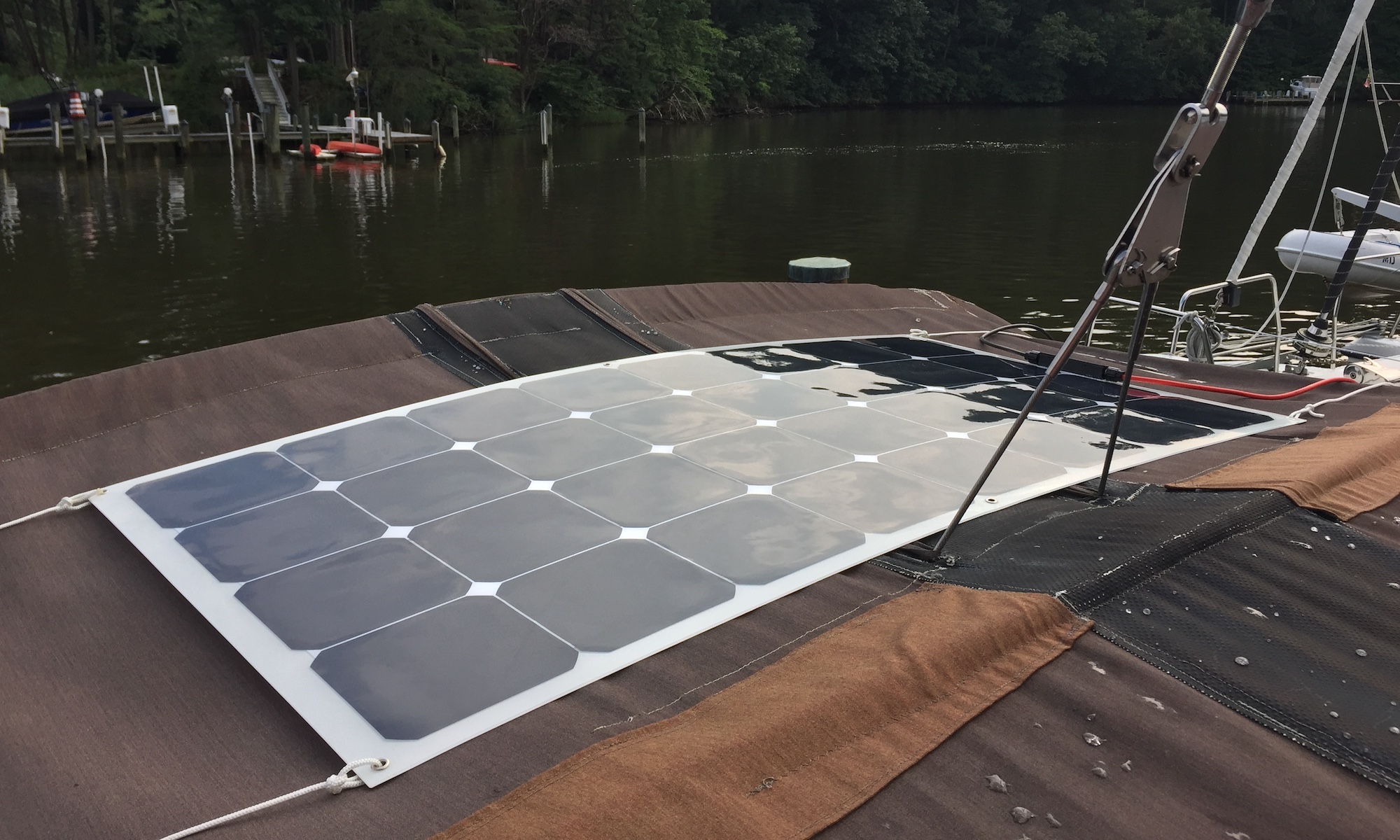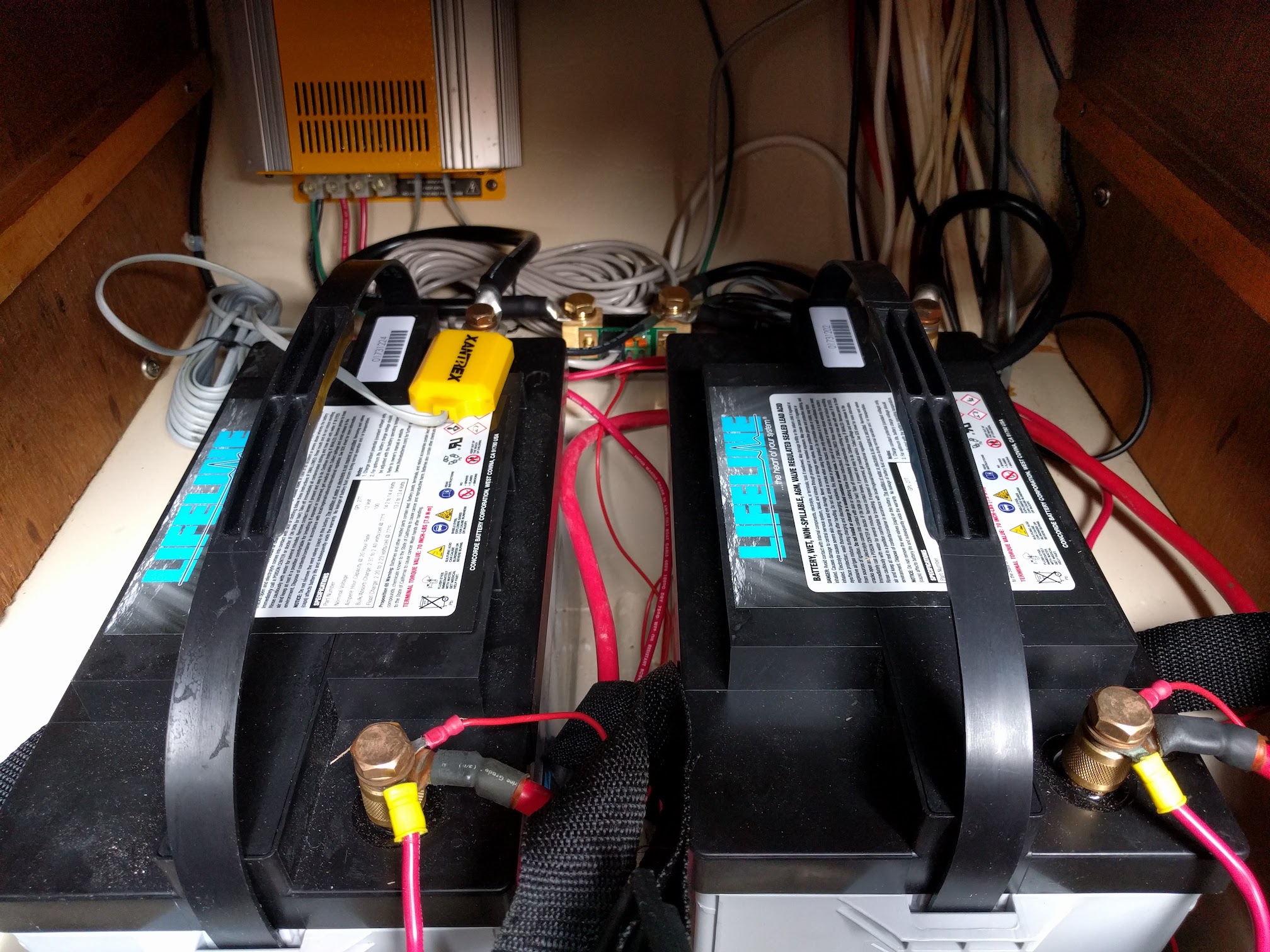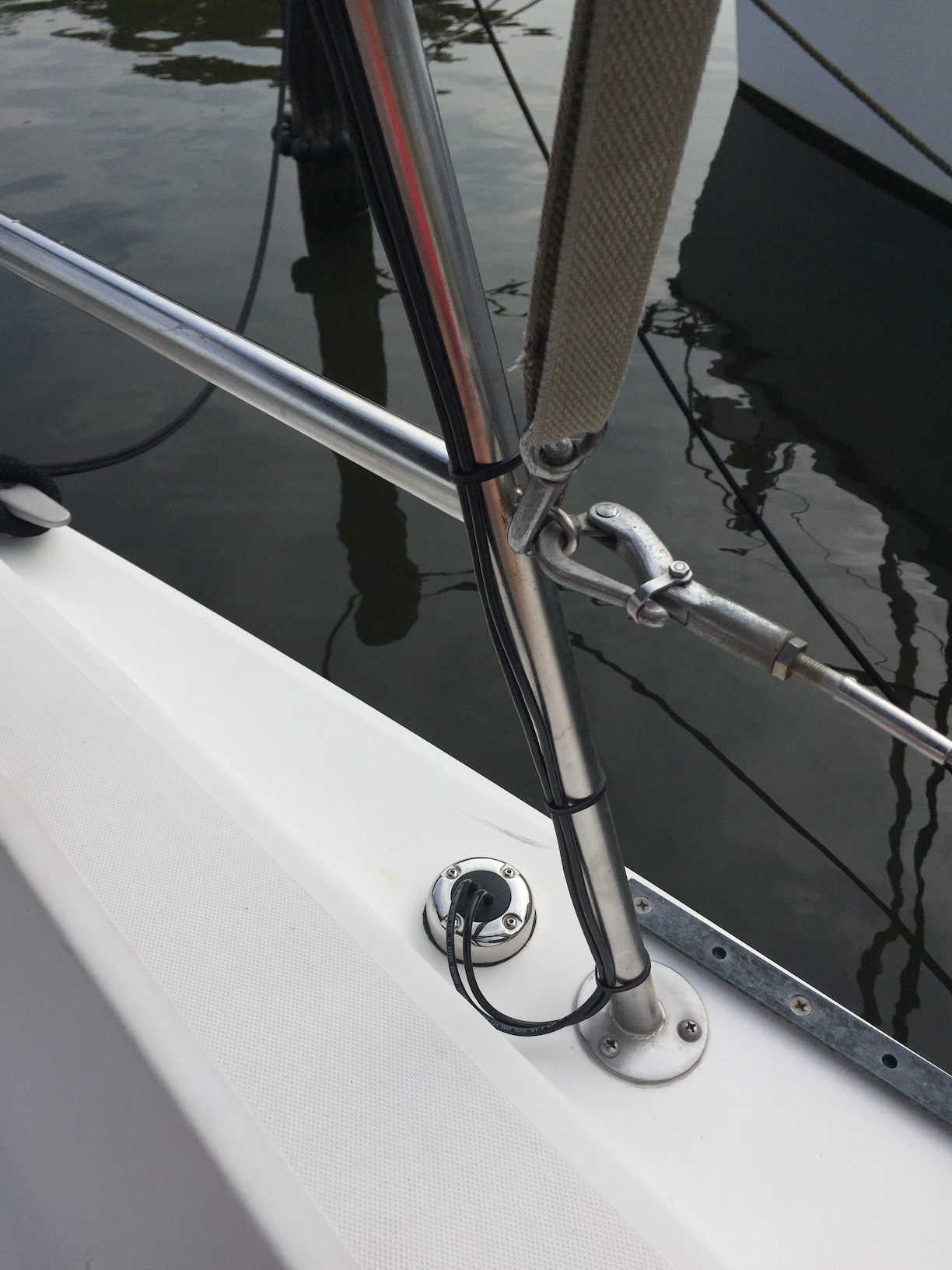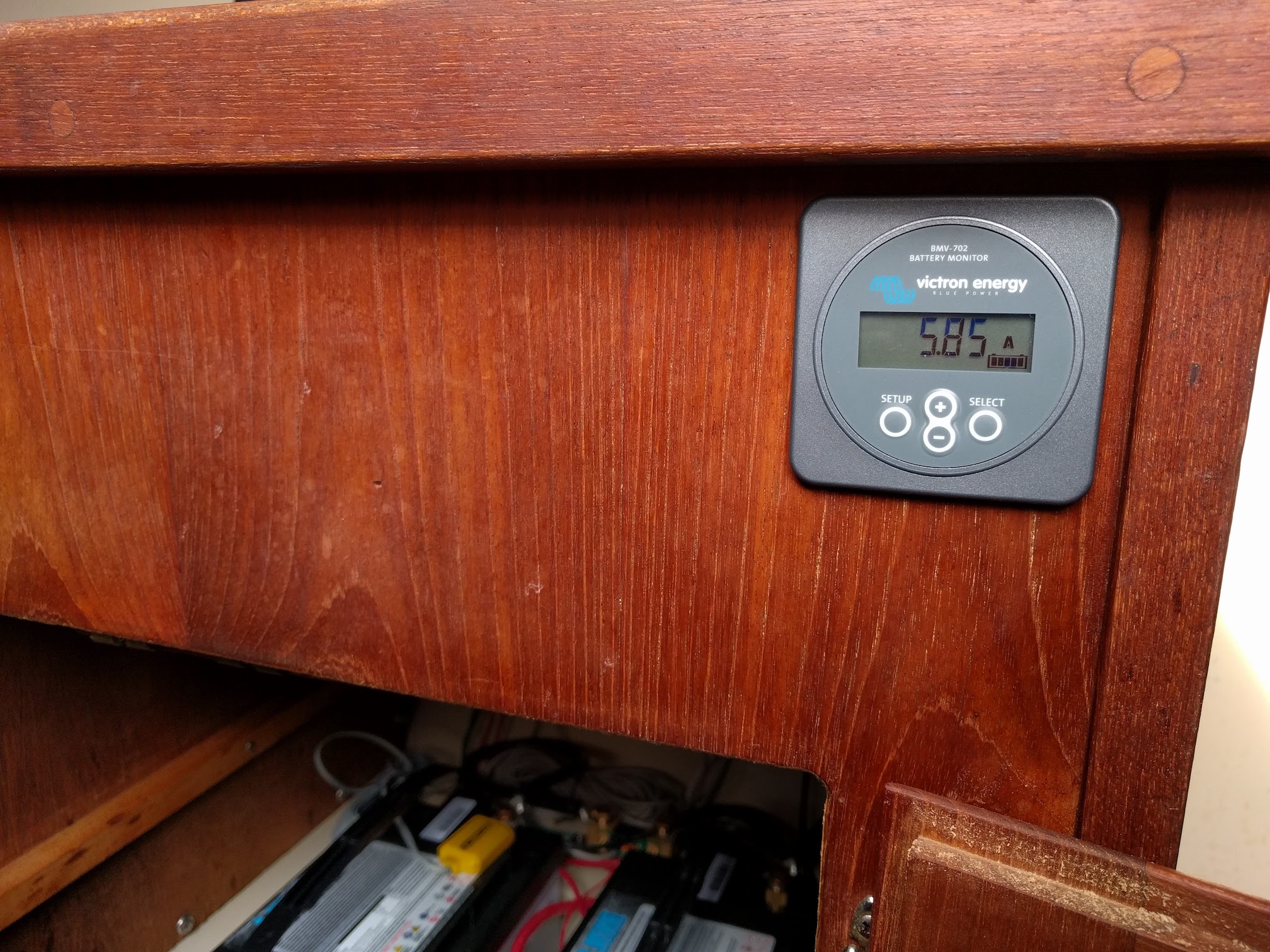Whether cruising boat sailors like to admit it or not, electrical systems have become a critical component of our vessels. Even if just used to start the “iron genny”, a reliable 12-volt system has become a necessity for safe cruising. After a few months of sailing our boat, we recognized that our electrical system was due for an upgrade.
Note: This post originally appeared on our sailing blog, The Bay and Beyond, which now redirects here.
When you buy a used car or house, you often find little gremlins a few months into ownership that weren’t caught by your original pre-purchase inspections. Boat are no different. Now having a few months of sailing our boat under our belts, we realized that our 12-volt DC system was not as reliable as we’d like. Our problems mostly boiled down to the fact that our batteries were not holding a strong charge. This sometimes made starting our auxiliary engine difficult and planted doubts in our mind about extended cruising.
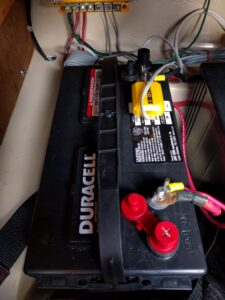
When Ellie and I bought our boat, it came with a standard two-battery setup: one for starting the engine, one for house loads (cabin lights, radio, instruments, etc.). A previous owner upgraded the system by adding a 20-amp shore power battery charger, but the batteries themselves were the old flooded lead-acid style. While a proven design, flooded (or “wet-cell”) batteries require periodic maintenance to keep them working optimally and safely. We noticed that even though the electrolyte levels in our batteries looked good, the batteries themselves weren’t holding a strong charge. Also, given the countless other maintenance tasks on a sailboat, we weren’t keen on adding the batteries to that list. We made the decision to dive into an electrical system overhaul.
First, we decided to replace both of our old batteries with reliable, maintenance-free AGM lead-acid batteries. We went with two new AGM batteries from Lifeline, which has a proven reputation in the marine industry. Additionally, we decided to add a solar battery charging system to eliminate our reliance on shore power for keeping our batteries topped up. The solar system would also give us passive battery charging while cruising away from our slip and other marinas. We went with a flexible 100-watt solar panel from WindyNation and a 20-amp solar charge controller from Renogy. Lastly, we decided to add a battery monitoring system to make it easier for us to track our electricity usage onboard.
Over a span of about three days (in 90-100 degree heat!) we got everything installed. First, we measured and ran all of the new cables. This included the time-honored tradition of drilling holes in a perfectly good boat! Next, we disconnected and pulled out the old batteries and installed the new ones. Once we got the new battery monitor installed, we finally hooked up the new solar charge controller and mounted the solar panel on top of our bimini. Check out the gallery below to see the fruits of our labor!
It was a long and sweaty three days worth of work, but it was all worth it in the end to feel way more confident about our electrical system. With the new battery monitor, we’ll be able to track our electrical usage during extended cruising and the new solar system is our first step towards “off the grid” cruising. See you out there!

